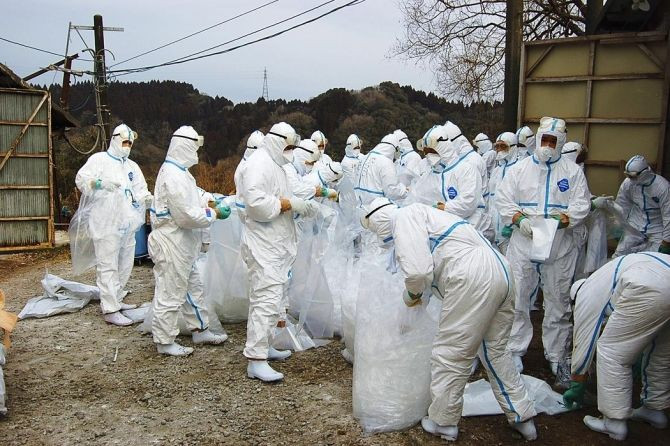Critics: Airborne Flu Research Important, But Not for Vaccine Purposes

Controversial flu researchers have argued that their airborne H5N1 virus creation, able to spread in easily among mammals, would assist in the speedier creation of flu vaccines should a strain like the one created in the laboratory emerge in the future. However most experts that say that the government censored research is unlikely to speed up the vaccine response in a pandemic, Nature reported on Wednesday.
Jeremy Farrar, director of the Oxford University Clinical Research Unit in Ho Chi Minh City, Vietnam, told Nature that such expectations “a red herring,” in other words misleading.
Many agree that the controversial flu research is important for understanding the flu virus, but not for vaccine purposes.
Farrar, like many other researchers said that the two studies, one led by Ron Fouchier at the Erasmus Medical Center and the other by Yoshihiro Kawaoka at the University of Wisconsin-Madison, said that although the flu studies could benefit flu surveillance in the long term, the current surveillance systems are nowhere close to being able to detect genetic changes in naturally circulating viruses similar to the lab strains which could provide an early warning of a pandemic and enable authorities to act quickly to contain the virus.
Many skeptics also argued that a pandemic could also very well be heralded by a completely different set of mutations, and if a pandemic were to occur, looking only for mutations reported by Fouchier and Kawaoka would be foolish.
“There are many, many, other ways that the virus could become transmissible,” he says. “It would be very unfortunate if people say that if we don’t see these mutations, we don’t need to worry,” Marc Lipsitch, an epidemiologist at the Harvard School of Public Health told Nature.
However in 2009, when the H1N1 pandemic began, a vaccine only became available months after the epidemic started, and was made available to only 20 percent of the global population.
Fouchier and Kawaoka have both said that their studies could improve pandemic preparedness, should a wild H5N1 virus be detected with combinations of mutations similar to those of the lab viruses, and they argued that manufacturers could speed up production of 'pre-pandemic' vaccines that were produced in small amounts against current H5N1 viruses.
Kawaoka argued that his lab-created strain could provide some cross-protection against any natural human pandemic resembling it.
Even Anthony Fauci, director of the US National Institute of Allergy and Infectious Diseases, had said that seeing the lab mutations accumulating in field isolates of H5N1 could “get us to be a little more attentive to revving up the capability of expanding the doses of vaccine we have”.
While producing a vaccine faster, and in greater amounts when a pandemic breaks out is a significant public health goal, many experts said that mutations like the lab-produced strains are unlikely to be spotted in time, in addition they said governments are unlikely to take the political or economic risks of making a vaccine on the basis of a potential pandemic threat.
“Nobody is going to ramp up production of a pre-pandemic vaccine based on these two experimental viruses,” Richard Webby, a flu virologist at the St. Jude Children's Research Hospital in Memphis, Tennessee told Nature. “That's 100 percent sure.”
Despite arguments from the flu researchers, vaccine manufacturers are unlikely to take any anticipatory action irrespective of any threatening changes in naturally occurring H5N1, and many in the industry have said that they cannot afford to switch its limited plant capacity from making seasonal flu vaccines to making potential pandemic vaccines until a human pandemic has actually emerged and production has been ordered by the government.
Farrar noted that because current mutant-flu studies have shown that an H5N1 pandemic is a real possibility, health officials should focus on shortening the time to develop and manufacture virus vaccines that will take many months to make, given the current technology and infrastructure.



























